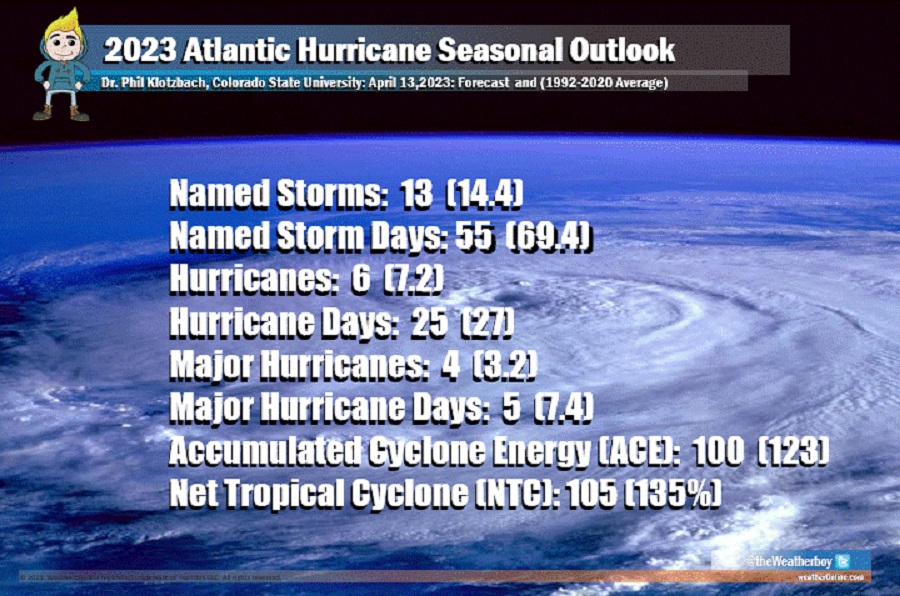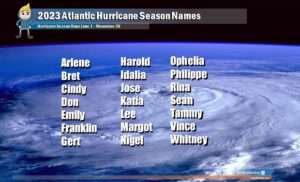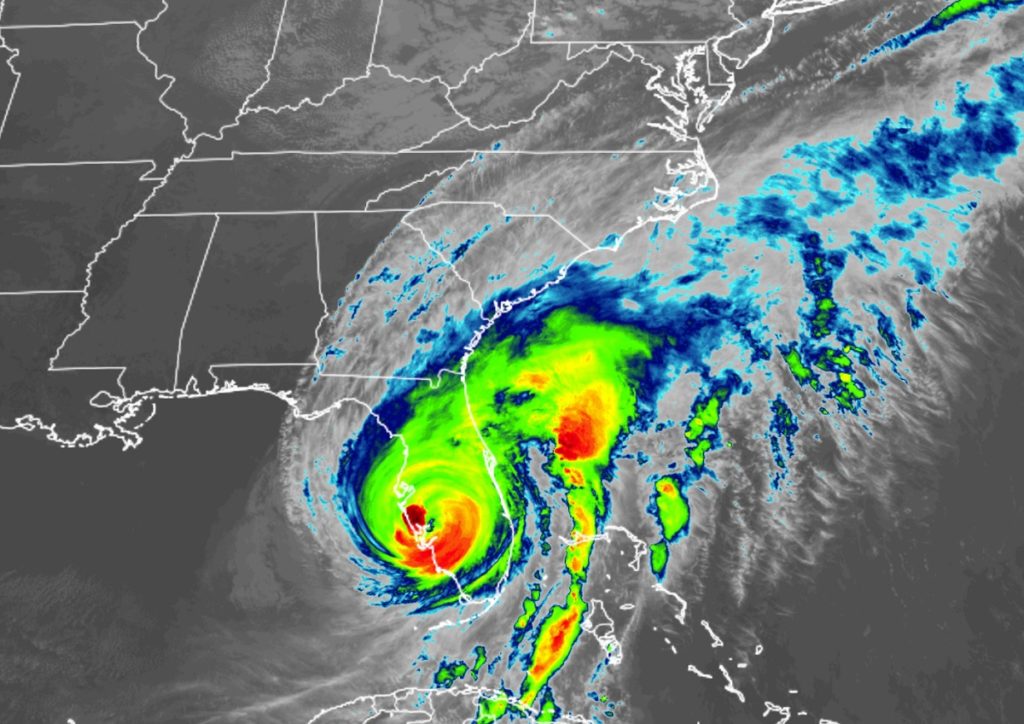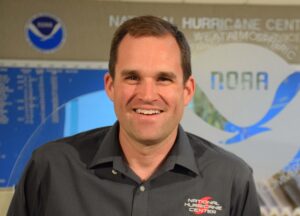
Tropical weather experts released their outlook for the 2023 Atlantic Hurricane Season and, unlike recent years, are calling for a slightly below average season in the months ahead. At the National Tropical Weather Conference on South Padre Island, Texas, today, Phil Klotzbach, Ph.D., research scientist in the Department of Atmospheric Science at Colorado State University (CSU) and lead author of the outlook, announced they’re predicting a slightly below-average Atlantic hurricane season in 2023, citing the likely development of El Niño as a primary factor. Eastern and central tropical and subtropical Atlantic sea surface temperatures are much warmer than normal, while Caribbean sea surface temperatures are near their long-term averages.
“The tropical Pacific currently has neutral ENSO conditions, that is, water temperatures are near normal in the eastern and central tropical Pacific. Current large-scale conditions and forecasts indicate that a transition to El Niño is relatively likely in the next several months. However, there is considerable uncertainty as to how strong El Niño would be if it does develop. El Niño tends to increase upper-level westerly winds across the Caribbean into the tropical Atlantic. The increased upper-level winds result in vertical wind shear which can tear apart hurricanes as they try to form,” the report released by CSU says.

However, CSU forecasters also say there is greater uncertainty than normal with their seasonal outlook.
“When waters in the eastern and central tropical and subtropical Atlantic are warmer than normal, this tends to force a weaker subtropical high and associated weaker winds blowing across the tropical Atlantic. These conditions lead to warmer waters in the tropical Atlantic for the peak of the Atlantic hurricane season. The anomalously warm eastern and central tropical and subtropical Atlantic favor an above-normal season.”
Given the conflicting signals between a potentially robust El Niño and an anomalously warm tropical and subtropical Atlantic, the team stresses that there is more uncertainty than normal with this outlook.
All in, the CSU outlook calls for 13 named storms compared to an average of 14.4; the outlook also calls for 6 hurricanes compared to an average of 7.2. Of those hurricanes, the CSU outlook says 4 could be grow into major hurricanes while the average is usually 3.2.
We asked Klotzbach if it’s any easier to make these forecasts over time as technology improves. “As we start the 40th year of seasonal Atlantic hurricane forecasts at Colorado State University, it’s instructive to see how far these forecasts have evolved since their first issuance since 1984,” Klotzbach said. “Data is much easier to obtain now than it was in the mid-1980s. Instead of using weather data from individual stations, we now use high-resolution reanalysis products which give us an idea of what wind patterns, pressure patterns, sea surface temperature patterns, etc. looked like all around the globe. These products allow us to be able to investigate predictors that we might not have known were there prior to the easy availability of these products.”
Climate models also help the CSU team with their seasonal outlooks. Klotzbach said “Our forecasts now also incorporate predictions from climate models as an additional guidance tool. In the mid-1980s, climate models were in their infancy and had effectively no skill at seasonal prediction. While these climate models certainly aren’t perfect today, they do have some skill at predicting broad-scale atmospheric/oceanic conditions several months into the future.”

And as they always do every year, meteorologists at CSU continue to caution the public that an above normal or below normal season can still be a dangerous one and that it only takes one storm to become a catastrophe. “It takes only one storm near you to make this an active season for you,” meteorologist Michael Bell said. Bell is a professor in the Atmospheric Sciences department at CSU and a member of the Tropical Meteorology Project team. Alex DesRosiers, a PhD candidate in the same department, is also a member of the team.

This is the 40th year that the CSU hurricane research team has issued an Atlantic basin seasonal hurricane forecast. Bill Gray, who originated the seasonal forecasts, launched the report in 1984 and continued to author them until his death in 2016.
The CSU team will issue forecast updates on June 1, July 6 and August 3. Their forecasts can be seen at https://tropical.colostate.edu/
SEE ALSO:
National Hurricane Center Announces New Director This Week
2023 Atlantic Hurricane Name List Unveiled
Special Note: Weatherboy provides an unrestricted educational grant to CSU for their Tropical Meteorology Project. Weatherboy is also a sponsor of the 2023 National Tropical Weather Conference where the CSU outlook is unveiled.